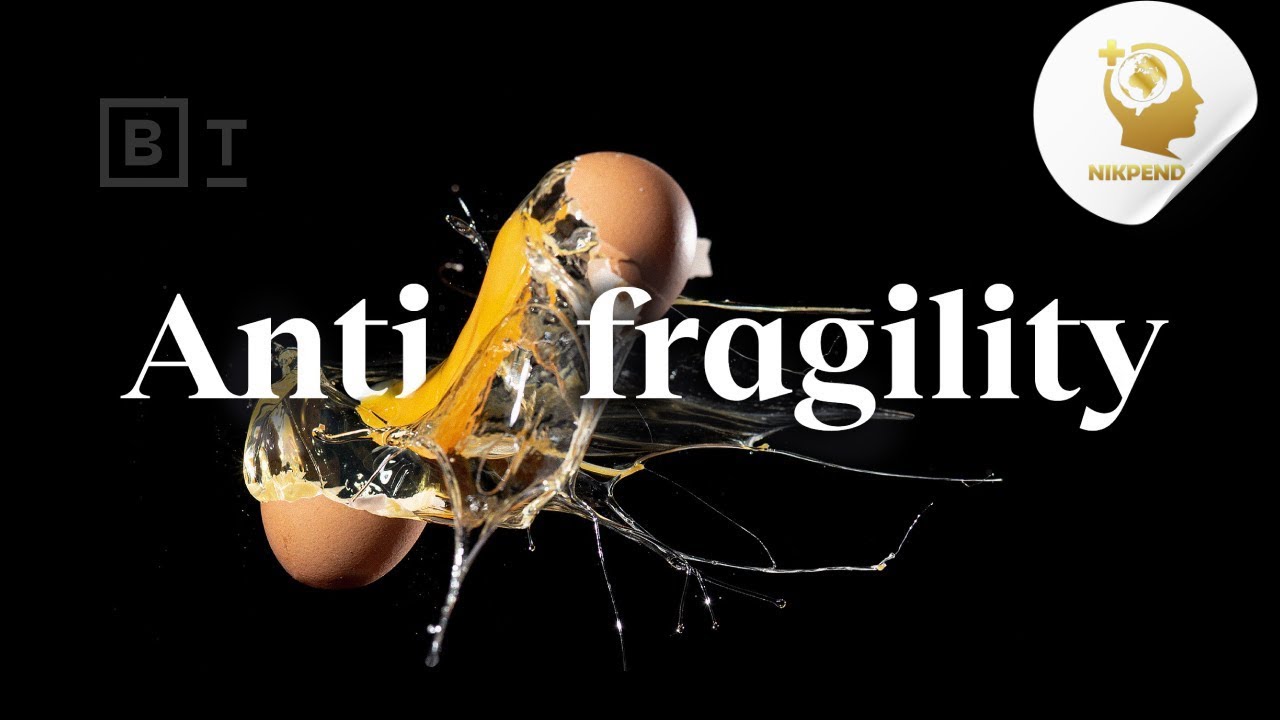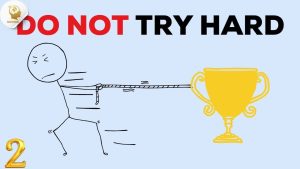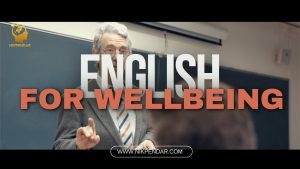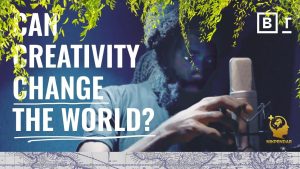
Beginner
- Task 1: Word Pairings and Definitions. Students will be given a list of words from the video , such as suffering, change, fragile, resilience, pain, pleasure. They must match each word to a simple definition or its opposite, then say the word and its definition aloud. This task builds foundational vocabulary and pronunciation.
- Task 2: Simple Sentence Completion. Students will listen to short clips from the videoand complete simple sentences. For example, after listening to the section about the wine glass, they would complete the sentence: “A wine glass is fragile because if you knock it over, it breaks.” This helps them practice listening for specific, context-rich vocabulary and simple grammatical structures.
- Task 3: Retelling a Simple Story. Students will listen to a short story from the video , such as the example of the wine glass and the plastic cup. They will then retell the story in their own words, using simple sentences. For example, “A wine glass is not strong. If you drop it, it breaks. A plastic cup is strong. It does not break.” This task helps develop basic narrative skills and reinforces vocabulary.
Intermediate
- Task 1: Explaining a Metaphor. Students will listen to the speaker’s explanation of antifragility and its examples (bones, the immune system). They will then explain in their own words what antifragility means, using at least one of the speaker’s examples. They should be able to articulate the difference between something that is fragile, resilient, and antifragile.
- Task 2: Role-play: Giving Advice. Students will listen to the segment where the speaker discusses the stoic idea of focusing on thoughts and actions. In pairs, one student will describe a problem they are facing (e.g., “My flight is delayed,” “I am stressed about a test”). The other student will then offer advice based on the stoic principles described in the video , using phrases like “You can’t control the flight delay, but you can control your thoughts about it.”
- Task 3: Summarizing a Key Idea. Students will listen to the final section about the three “ingredients” of resilience (optimism, resourcefulness, memory loss). They will then summarize each of these ingredients in a short, clear paragraph, explaining what the speaker says about each one. This task requires them to listen for and synthesize multiple points from a longer segment.
Advanced
- Task 1: Delivering a Short Presentation. Students will prepare and deliver a short presentation on one of the main concepts from the video(antifragility, resilience, or the critique of positive thinking). They must define the concept, explain its core principles, and use examples from the videoto support their explanation.
- Task 2: Group Discussion and Debate. Students will participate in a guided discussion about the speaker’s argument against the “American obsession with positive thinking.” They will be asked to summarize the speaker’s point and then debate whether they agree or disagree, supporting their arguments with examples from their own lives and the video . This task promotes higher-level critical thinking and conversational skills.
- Task 3: Storytelling and Personal Reflection. Students will listen to the speaker’s story about his time in prison and his definition of resilience. They will then share a personal story of their own about a time they had to be resilient. They should try to use some of the key vocabulary and concepts from the videoto describe their experience, such as facing an “obstacle” or having “hope.” This task connects the aural comprehension of complex ideas with the ability to express personal experiences in a nuanced way.
Beginner
- Listening for Key Words. Students are given a list of words from the video , such as change, pain, fragile, resilience, stronger, and bones. They listen to the recording and check off the words they hear. This task helps them identify and recognize crucial vocabulary.
- Simple True/False Statements. Students listen to short sections and then are presented with simple true/false statements based on the content. For example, “A wine glass is fragile” (True) or “A plastic cup breaks when it is thrown” (False). This task helps beginners practice listening for specific, explicit information.
- Simple Question Answering. Students listen to a short, clear statement and answer a simple “wh-” question, such as, “What happens to your bones if you go to Mars?” (They get weak) or “What happens if you protect kids from bacteria?” (You damage their immune system). This practice focuses on pulling explicit information from the dialogue.
Intermediate
- Listening for Specific Details. Students listen to the section about the immune system and answer specific questions: “What does the speaker say the immune system needs to face?” (challenges) and “What is the danger of keeping kids in a sterile environment?” (it damages their immune system). This task requires learners to sift through information to find targeted details.
- Identifying Cause and Effect. Students listen to the speaker’s explanation of why focusing on happiness can make you less happy. They must identify the reason given: “expectations are disappointments waiting to happen.” This helps students understand how ideas are linked in a narrative.
- Listening for Tone and Emotion. Students listen to different parts of the monologue and describe the speaker’s tone. For example, is he optimistic, reflective, or cautionary? They should be able to identify emotional cues and explain what words or phrases convey them.
Advanced
- Analyzing Argument Structure. Students listen to the monologue and analyze the structure of the speaker’s argument. They should identify the main point of each section (e.g., the definition of antifragility, the critique of positive thinking, the lesson from prison) and explain how the different speakers’ points connect to create a cohesive message about resilience. This task requires a high-level understanding of the monologue’s overall structure.
- Identifying and Explaining Complex Concepts. Students listen for the speakers’ definitions of key concepts like antifragility and resilience. They then provide a detailed explanation of what each speaker means by these terms, using the examples provided. This tests the ability to understand and articulate abstract ideas.
3. Comprehensive Note-Taking and Summarizing. Students listen to the entire monologue and take detailed notes on the different speakers’ views on resilience. After listening, they use their notes to write a comprehensive summary of the entire piece, capturing the main ideas and the different perspectives presented. This task synthesizes listening and writing skills at a high level.
Beginner
- Vocabulary Matching. Students read a list of words from the video , such as suffering, fragile, resilient, optimism, resourceful, hope. They match each word to a simple definition or a picture representing the concept. This task helps build a foundational vocabulary.
- Basic Comprehension Questions. Students read a short, specific section of the videoand answer simple “wh-” questions to find explicit information. For example, “What happens if you knock over a wine glass?” or “What happens to your bones if you fly to Mars?” This focuses on literal comprehension and detail extraction.
- Simple True/False Statements. Students read a series of statements based on a short segment of the videoand decide if each is true or false. For instance, “A plastic cup breaks when it is thrown off a table” (False) or “The immune system gets stronger when it faces challenges” (True). This practice reinforces reading for explicit details.
Intermediate
- Explaining a Metaphor. Students read the section that describes the difference between a fragile wine glass, a resilient plastic cup, and an antifragile system. They then write a short paragraph explaining the metaphor, using their own words to describe each of the three concepts. This task helps learners understand and articulate figurative language.
- Identifying Cause and Effect. Students read the section that critiques the “American obsession with positive thinking.” They write a short paragraph identifying the cause and effect relationship the speaker describes: What is the cause (the obsession with being happy as a goal) and what is the effect (greater unhappiness)? This task helps students understand how ideas are linked in a narrative.
- Analyzing a Key Idea. Students read the part of the videothat discusses what we can control (thoughts and actions). They then write a short paragraph explaining this “stoic” idea and how it can help a person avoid “unnecessary disturbance and anxiety.” They should use direct quotes from the text to support their explanation.
Advanced
- Analyzing Argument Structure. Students read the entire videoand write a detailed outline of the speakers’ arguments. They should identify the main claim of each speaker and the examples or evidence they use to support that claim. This task requires a high-level understanding of the monologue’s overall structure and logical flow.
- Examining Language and Style. Students write a short essay analyzing the speakers’ linguistic choices. They should discuss the use of terms like “antifragility,” “witness place,” and “memory loss,” and argue how these stylistic choices contribute to the overall message. They can also analyze the shift in tone between the different speakers (e.g., academic, personal, inspirational).
- Summarizing and Critiquing an Argument. Students read the entire videoand write an essay that summarizes the speakers’ core arguments about resilience and happiness. They should also include a brief critique of the validity and coherence of these arguments, using specific examples from the text. This task requires a high level of analytical and critical reading skills.
Beginner
- Task 1: Vocabulary Matching and Writing. Students read a list of key words from the videolike fragile, resilience, and optimism. They then match each word to its simple definition from the text (e.g., fragile is a word for something that breaks easily like a wine glass) and write a sentence for each word. This task helps build a foundational vocabulary and reinforces spelling and sentence structure.
- Task 2: Simple Summary. Students read a short, specific section of the video , such as the example of the wine glass and the plastic cup. They then write a few simple sentences to summarize the difference between something that is fragile and something that is resilient. This task helps learners practice summarizing a key idea in their own words.
- Task 3: Sentence Completion. Students are given a short passage from the videowith key words missing (e.g., “Bones have to be tested or they get weak.”). They read the videoand write in the missing words to complete the sentences. This task helps learners practice spelling and writing specific words in a meaningful context.
Intermediate
- Task 1: Explaining a Metaphor. Students read the section that describes the concept of antifragility and its examples (bones, the immune system). They then write a paragraph explaining what antifragility means, using at least one of the speaker’s examples to support their explanation.
- Task 2: Analyzing a Quote. Students choose one of the quotes from the video(e.g., “what doesn’t kill you makes you stronger” or “love is learning to say yes to what is”). They write a paragraph explaining what the quote means and how it relates to the broader themes of the text.
- Task 3: Argumentative Paragraph. Students read the section that critiques the “American Obsession with positive thinking.” They then write a paragraph arguing for or against the speaker’s point, using their own experiences or observations to support their argument.
Advanced
- Task 1: Analytical Essay. Students read the entire videoand write an essay analyzing the speakers’ arguments about resilience and happiness. They should discuss the different viewpoints presented (e.g., the stoic perspective, the critique of positive thinking, the lesson from prison) and explain how they build on each other to create a cohesive message.
- Task 2: Creative Writing: A Personal Reflection. Students read the final section about taking “one small step into the fear.” They then write a personal narrative about a time they had to face a fear or overcome an obstacle. They should use some of the key vocabulary and concepts from the videoto describe their experience.
- Task 3: Critical Analysis. Students write an essay that summarizes the speakers’ core arguments about resilience, hope, and change. They should also include a brief critique of the validity and coherence of these arguments, using specific examples from the text and discussing any logical fallacies or biases they identify.





